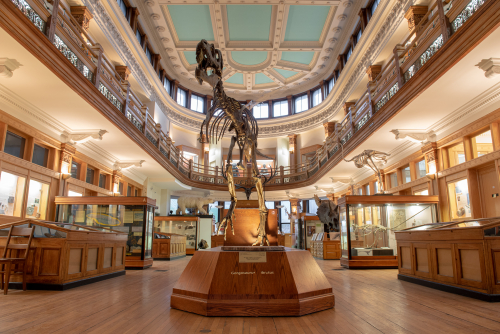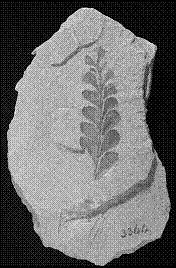

Highlights of the vertebrate collection include the oldest known terrestrial fauna from the Carboniferous of Joggins, Nova Scotia, the largest collection of invertebrate Ordovician fossils from the Saint Lawrence Lowlands (about 150 000 specimens), and a noteworthy collection of Burgess Shale fossils collected by T.H. Clark in 1924 as well as about 1000 Type and Figured specimens. The Museum also holds all the Dawson type specimens of fossil plants, including the oldest vascular plants from the Devonian of eastern Canada. Permanent exhibits in the Dawson Gallery, surrounding a skeleton of Gorgosaurus libratus, take you through billions of years in the history of life in Canada.
Invertebrate Fossils
The museum holds the largest collection of Ordovician invertebrates from the St. Lawrence Lowlands (about 30 000 specimens) as well as the Colin Stearn research collection of stromatoporoids (approximately 2000 lots of thin sections and original samples). It also possesses a small collection of Burgess Shale fossils collected by T.H. Clark in British Columbia during a 1924 expedition.

Maclurites, a sea snail from the Ordovician (about 450 million years ago)
Vertebrate Fossils
Significant holdings in the vertebrate collection include: the oldest known fossil terrestrial vertebrates from the Carboniferous of Joggins, Nova Scotia, Pleistocene marine mammals from the Champlain Sea and R.L. Carroll's collection of early vertebrates in the form of "peels" and casts.
Archaeopteris gaspiensis, Upper Devonian, Gaspé, Québec
Plant Fossils
Among the fossil plants, the museum holds all the Dawson types including the oldest vascular plants from the Devonian of eastern Canada.
